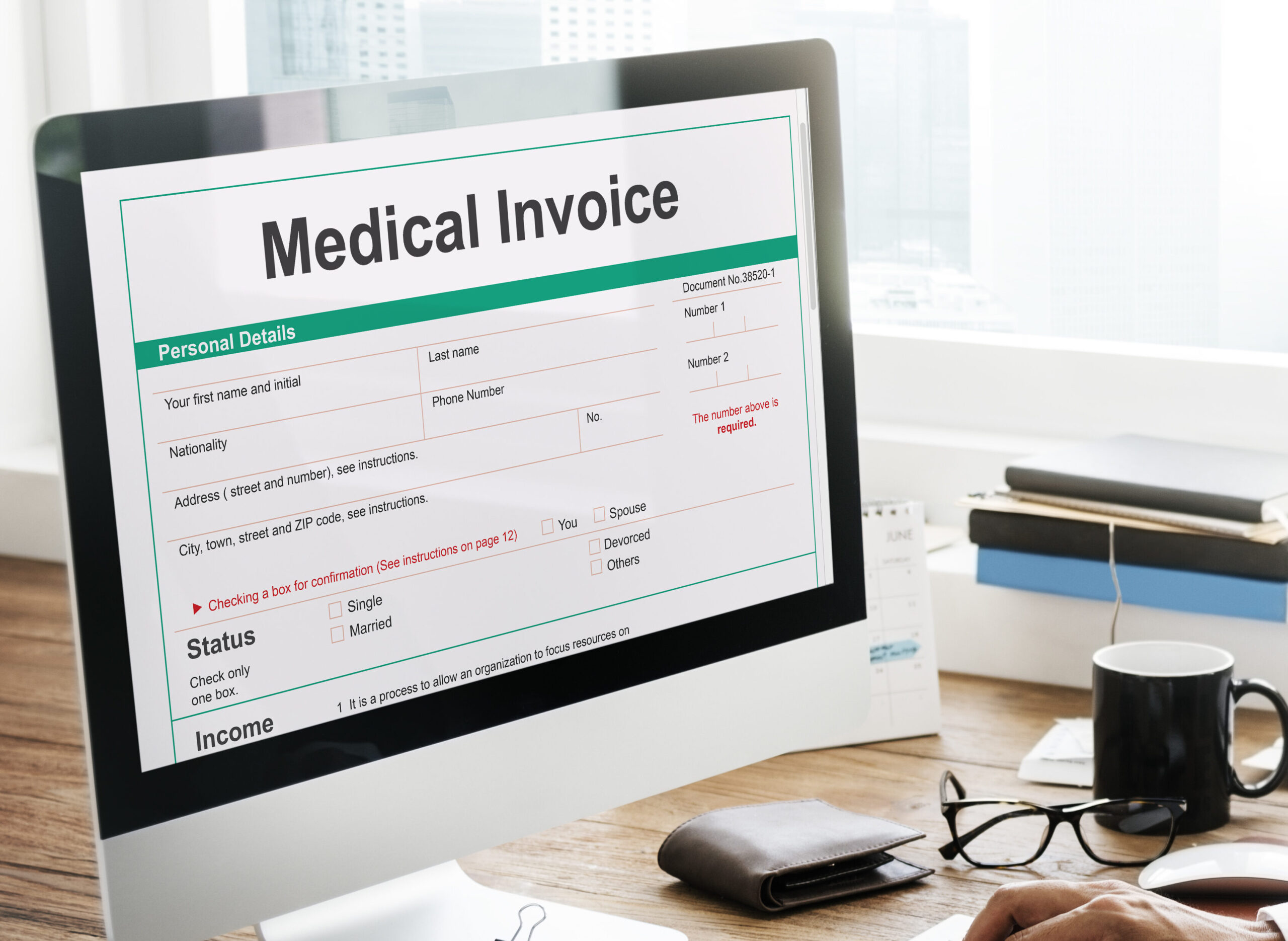
The healthcare landscape is constantly evolving. New technologies and healthcare apps emerge rapidly, offering exciting possibilities for improving patient care and streamlining processes. However, this rapid innovation presents a challenge: ensuring that these advancements don’t come at the expense of protecting patient privacy.
Let’s imagine a scenario where a healthcare facility partners with a new cloud storage service to store massive amounts of patient data. This solution promises increased efficiency and scalability, but it also raises a crucial question: how secure is this third-party vendor’s infrastructure? As a sourcing or vendor management professional in the healthcare industry, navigating the world of third-party vendors that handle patient information requires diligence.
Understanding and adhering to HIPAA regulations is no longer just about safeguarding information within facilities directly managed by your enterprise. The Health Insurance Portability and Accountability Act (HIPAA) extends to protecting patient data wherever it resides. HIPAA places the responsibility on covered entities (healthcare providers, health plans, and clearinghouses) to ensure their business associates also comply with specific security measures for protecting the Protected Health Information (PHI).
This guide equips sourcing and vendor managers with an overview of HIPAA and the actionable steps that can be used for risk assessment and governance when using third-parties to store, service or access patient data. Whether you’re sourcing healthcare providers, managing vendor relationships, or overseeing data flow, this guide provides essential insights into HIPAA compliance, enabling you to protect patient information and mitigate risks within your supply chain.
Here’s a glimpse of what sourcing and vendor management professionals will gain from this guide:
- HIPAA 2024 Updates – An overview of recent HIPAA revisions and proposed changes
- Challenges in Implementing the 2024 HIPAA Updates – The challenges facing sourcing and vendor management professionals due to these revisions
- Essential Resources – Links to valuable resources like the HHS website, HIPAA training modules, and sample compliance policies.
The Evolving HIPAA Landscape
What is HIPAA?
The Health Insurance Portability and Accountability Act (HIPAA) is a federal law that protects the privacy of individually identifiable health information (PHI) of patients. Understanding and adhering to HIPAA regulations is crucial to safeguarding sensitive patient data and avoiding potential penalties.
What Information is Protected Under HIPAA?
HIPAA safeguards a broad range of patient information, including:
- Demographics (name, address, date of birth)
- Medical history (diagnosis, treatment history, allergies)
- Payment information (insurance details)
- Test results
- Mental health records
- Genetic information
There are three core HIPAA rules that impact vendor management, in addition to the various provisions that HIPAA includes: HIPAA Privacy Rule, HIPAA Security rule and HIPAA Breach Notification rule.
1. HIPAA Privacy Rule
The HIPAA Privacy Rule establishes national standards for protecting individuals’ protected health information (PHI). It outlines specific requirements for covered entities, including healthcare providers, health plans, and healthcare clearinghouses, regarding the use, disclosure, and safeguarding of PHI. For vendor managers, understanding this rule is critical to managing third-party risks and ensuring compliance.
- Minimum Necessary Rule – This rule requires using, disclosing or requesting for only the minimum amount of PHI essential for treatment, payment, or healthcare operations.
- Patient Access Rights – Patients have the right to access, review, and amend their medical records. You must provide a process for them to exercise these rights.
- Accounting of Disclosures – Covered entities are required to track and document disclosures of PHI to third parties outside of treatment, payment, or healthcare operations. For example, a vendor providing medical billing services discloses patient information to a health insurance payer for reimbursement purposes. The vendor must maintain accurate records of these disclosures, including the date, type of information disclosed, and the recipient.
- Administrative Safeguards – It is mandatory for organizations to implement policies and procedures for handling PHI securely, including data access controls, encryption, and employee training.
2. HIPAA Security Rule
In 2023, the American Medical Collection Agency (AMCA) data breach exposed over 20 million patients’ data. While not a healthcare provider itself, the American Medical Collection Agency (AMCA) handled sensitive patient data including names, addresses, Social Security numbers, and medical information for debt collection purposes. Incidents like these highlight the critical need for proper data security configurations and access controls
The HIPAA Security Rule focuses on protecting electronic protected health information (ePHI). It mandates that covered entities (healthcare providers, health plans, and clearinghouses that handle ePHI) implement safeguards to ensure the confidentiality, integrity, and availability of ePHI:
- Confidentiality – Measures to ensure ePHI is not accessed or disclosed by unauthorized individuals. This could involve access controls, encryption, and password management.
- Integrity – Safeguards to ensure ePHI remains accurate and complete. This might involve data validation procedures and audit trails.
- Availability – Mechanisms to ensure authorized personnel can access ePHI when needed. This could involve backup and disaster recovery plans.

The Security Rule outlines specific requirements for:
- Physical Safeguards – Physical security measures to protect electronic devices storing ePHI, such as restricted access to server rooms.
- Administrative Safeguards – Policies and procedures for ePHI security, covering user access controls, password management, and risk assessments.
- Technical Safeguards – Encryption of ePHI at rest and in transit, data integrity measures to ensure accuracy, and audit trails to track access.
3. HIPAA Breach Notification Rule
In the event of a data breach involving PHI, healthcare providers and covered entities must notify affected individuals and the Department of Health and Human Services (HHS) following specific timeframes outlined in the rule.
- Breach Definition – This rule defines a breach as the unauthorized acquisition, access, use, or disclosure of PHI that compromises the security or privacy of the information.
- Notification Requirements – The specifics of notification depend on the severity and nature of the breach.
- Low-risk breaches – May require notification to affected individuals only.
- Unforeseen breaches – May require notification to HHS and the media if more than 500 individuals are affected.
- High-risk breaches – Require notifying HHS and potentially the media, regardless of the number of individuals affected.
Understanding these core HIPAA rules is crucial for operations and vendor managers to ensure they are protecting patient privacy and complying with regulations
Understanding the 2024 HIPAA Updates
HIPAA has been significantly revised in 2024 to reflect the increased complexity of managing healthcare data and the need for improved patient information protection in an increasingly interconnected digital world. Proposed changes to HIPAA regulations in 2024 aim to enhance patient rights, strengthen data security, and clarify compliance expectations. These revisions have significant implications for vendor managers who play a critical role in safeguarding patient information.
By staying informed about the evolving HIPAA landscape, organizations can proactively implement strategies to protect patient data, manage risks effectively, and demonstrate a strong commitment to compliance
Expanded Privacy Protection
The revised HIPAA regulations aim to provide stronger protection for patient privacy. This includes stricter controls over the sharing of electronic health information, limiting its transfer to authorized entities. Furthermore, the rules clarify the circumstances under which covered entities can disclose PHI, emphasizing patient well-being and care coordination. A notable addition is the specific protection for substance use disorder (SUD) records, recognizing the sensitive nature of this information.
Enhanced Patient Rights and Access
The proposed HIPAA changes significantly expand patient rights over their health information. Individuals will have greater control over their data, including the ability to inspect and obtain copies of their medical records. The rules also streamline the process of accessing electronic health information (EHI) and provide clearer guidelines regarding fee waivers. Additionally, patients will have more options for directing how their health information is shared, such as the ability to send it to personal health applications.

Strong Cybersecurity Requirements
The healthcare sector is a prime target for cyberattacks due to the growing reliance on electronic health records (EHRs) and the abundance of healthcare data. Stricter cybersecurity requirements, including increased risk assessments, incident response plans, and data encryption procedures, were implemented by the 2024 HIPAA revisions in response to this expanding threat.
Breach Notification Requirements
The HIPAA changes of 2024 aim to provide patients with timely notice of any unauthorized exposure of their PHI by strengthening and clarifying the standards surrounding breach notification. A thorough breach notification plan that covers how to find, look into, and notify the US Department of Health and Human Services (HHS) of a breach must be in place for healthcare organizations. The proposed changes extend breach notification requirements to include substance use disorder records, aligning with the overall goal of enhanced patient protection. This expansion underscores the importance of timely disclosure of data breaches to affected individuals.
Challenges Implementing HIPAA 2024 Updates
The new revisions in HIPAA landscape pose significant challenges for operations and vendor managers tasked with safeguarding patient health information (PHI). Implementing robust security measures, ensuring compliance with patient rights, and responding to data breaches are the main concerns facing sourcing and vendor managers.
Challenge #1: Implementing Enhanced Privacy and Cybersecurity Measures
Safeguarding patient data in today’s digital age is a challenge. It is the responsibility of vendor managers to assess the security posture of third-party vendors. Determining the adequacy of a vendor’s security controls, data encryption practices, and access management policies is crucial to protect patient information. Moreover, with the evolving cyberthreats, it is important to continuously monitor third-party vendors. Staying ahead of these threats requires substantial investments in technology, personnel, and training, placing significant strain on healthcare organizations.
Additionally, the proliferation of third-party vendors introduces additional layers of risk, requiring meticulous due diligence and ongoing monitoring. The potential consequences of a data breach, including financial loss, reputational damage, and legal liabilities, underscore the critical importance of proactive risk management.
Challenge #2: Ensuring Patient Rights for Data Access
Vendor managers face the challenge of ensuring that patients have timely access to their health information while safeguarding data privacy. This requires a delicate balance between fulfilling patient requests for access and modification and maintaining robust security measures. Coordinating with healthcare providers to meet these competing demands can be complex and requires effective communication and collaboration. This requires efficient data retrieval systems, clear communication channels with healthcare providers, and robust authentication measures.
Furthermore, the evolving regulatory landscape introduces additional complexities. Staying ahead of changing privacy laws and adapting vendor practices accordingly is crucial to avoid compliance risks.
The challenge is compounded by the increasing reliance on third-party vendors. Ensuring that these vendors comply with data protection standards and handle patient information responsibly is essential. Vendor risk management and ongoing monitoring are vital to mitigate potential risks.
Challenge #3: Adhering to Stricter Breach Notification Protocols
Responding effectively to data breaches is a critical challenge for vendor managers. The pressure to quickly identify, contain, and report incidents is compounded by increasingly stringent regulatory timelines. Developing and maintaining effective incident response plans, including clear communication protocols with vendors and healthcare providers, is essential.

Ensuring that all parties involved understand their roles and responsibilities in the event of a breach is crucial for minimizing damage and maintaining patient trust. Additionally, the complex nature of the modern IT infrastructures, with multiple interconnected systems and vendors, can affect incident response efforts. Additionally, documenting breach investigations thoroughly and accurately is vital for demonstrating compliance with regulatory requirements. Balancing the need for timely notification with the requirement for accurate and complete information can be challenging.
Enlighta Spice and HIPAA 2024
Enlighta Spice offers a comprehensive approach to addressing the critical challenges posed by the new updates in HIPAA. By providing effective tools for vendor risk assessment, continuous monitoring, and incident response, Enlighta Spice empowers organizations to protect patient data, ensure compliance, and mitigate risks.
Enhancing Privacy and Cybersecurity Measures
Enlighta’s platform goes beyond basic vendor risk assessment by automating the validation of vendor provided evidence and providing granular insights into vendor security postures via cybersecurity assessment partner integrations. By analyzing vendor data across multiple dimensions, including financial health, cybersecurity posture, and compliance history, Enlighta provides a comprehensive view of vendor risk.
This proactive approach enables organizations to implement targeted security measures and mitigate risks before they escalate. Furthermore, Enlighta’s ability to assess vendor supply chains helps identify potential weaknesses within the extended ecosystem.
By going beyond surface-level assessments, Enlighta empowers organizations to make informed decisions about vendor relationships and mitigate risks proactively.
Ensuring Patient Rights
To effectively safeguard patient rights, Enlighta offers comprehensive data mapping capabilities. The platform empowers organizations to not only track data flow but also to understand the specific data elements being accessed, stored, or released to third parties.
This granular level of visibility enables organizations to accurately respond to patient requests for access or amendment of their health information. By tracking the flow of patient data across different systems and vendors, organizations can accurately respond to patient access and amendment requests.
Additionally, the platform’s contract management features ensure that patient rights are clearly defined and enforced within vendor agreements. Enlighta’s ability to monitor vendor performance regarding patient data handling further strengthens patient protection.
Adhering to Stricter Breach Notification Protocols
Enlighta’s incident response capabilities extend beyond basic notification. By offering a centralized platform for managing the incident lifecycle, Enlighta enables efficient coordination and collaboration among internal teams and external stakeholders.
A key aspect of incident response is root cause analysis. Enlighta’s platform facilitates this process by providing detailed incident reports and timeline reconstruction. By identifying the root cause of a breach, organizations can identify patterns and implement targeted measures to prevent recurrence.
Enlighta’s ability to track the impact of a breach across multiple systems and vendors is crucial. By mapping data flows and identifying affected parties, organizations can effectively communicate with individuals and entities at risk. This proactive approach helps to mitigate reputational damage and minimize legal liabilities.
Do you want to find out how Enlighta Spice can help your healthcare vendor management and TPRM needs? Get in touch with us at info@enlightaspice.com
Also read: Continuous global sanctions screening: Third-Party risk management essentials
Essential Resources
- HIPAA Training and Resources: https://www.hhs.gov/guidance/document/hipaa-training-materials
- HIPAA Journal: https://www.hipaajournal.com/ (Industry resource with news and insights)
- HHS HIPAA for Professionals: https://www.hhs.gov/hipaa/for-professionals/index.html
- https://www.hhs.gov/hipaa/index.html
- https://www.hhs.gov/hipaa/for-professionals/privacy/guidance/minimum-necessary-requirement/index.html
- https://www.hhs.gov/hipaa/for-professionals/privacy/laws-regulations/index.html
- https://www.hhs.gov/programs/hipaa/index.html
- https://www.hhs.gov/hipaa/for-professionals/breach-notification/breach-reporting/index.html
- https://www.hipaajournal.com/hipaa-updates-hipaa-changes







